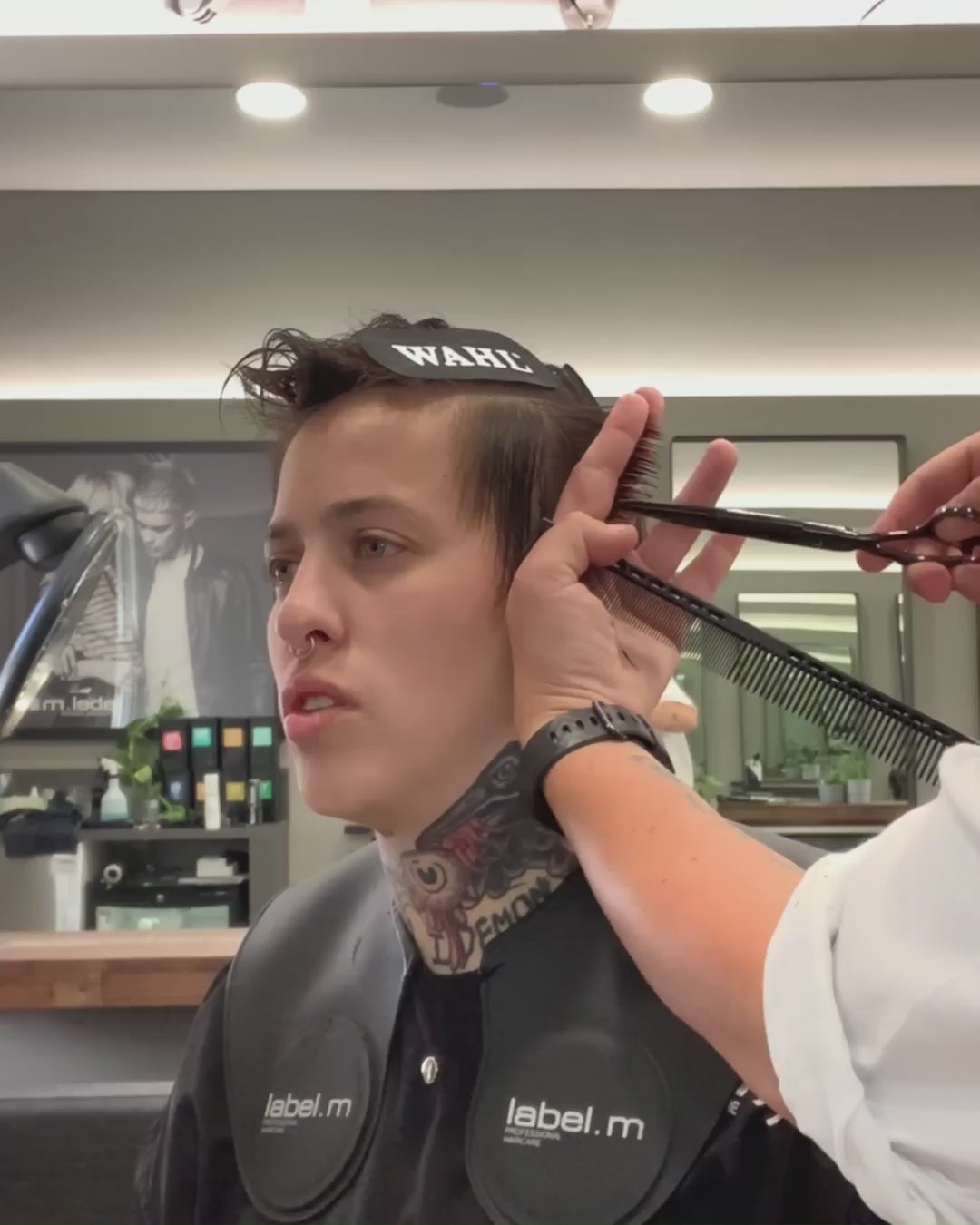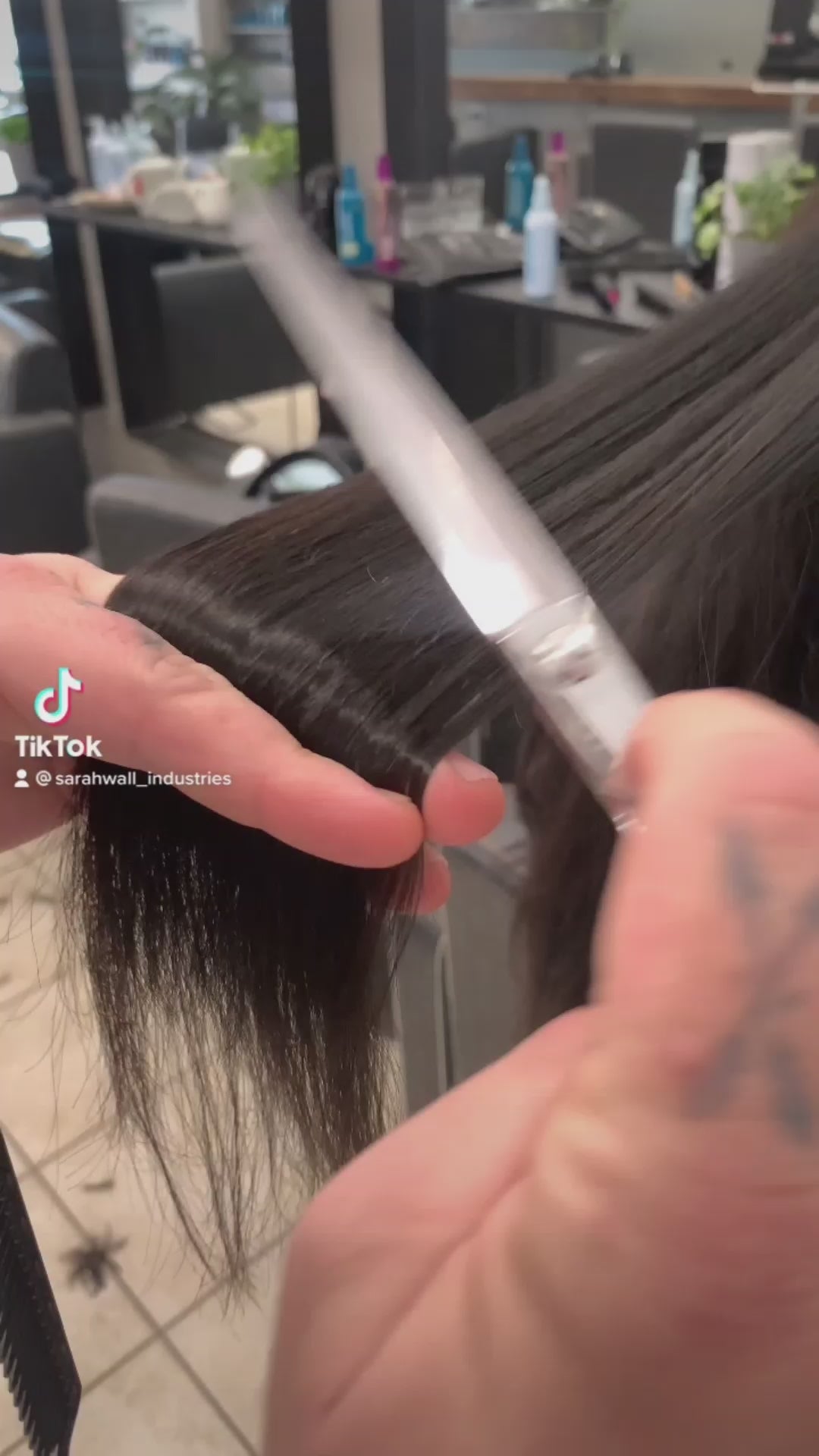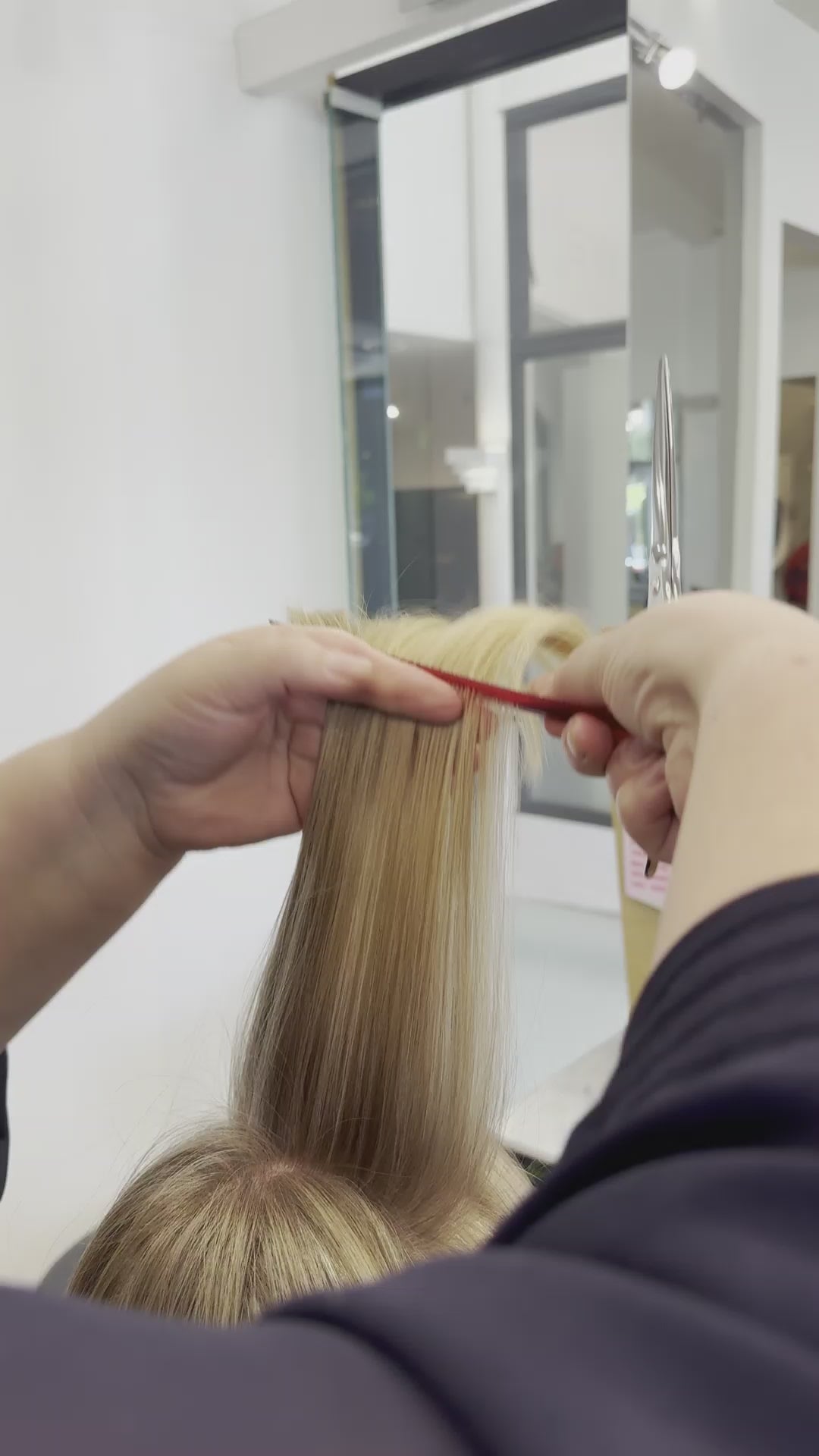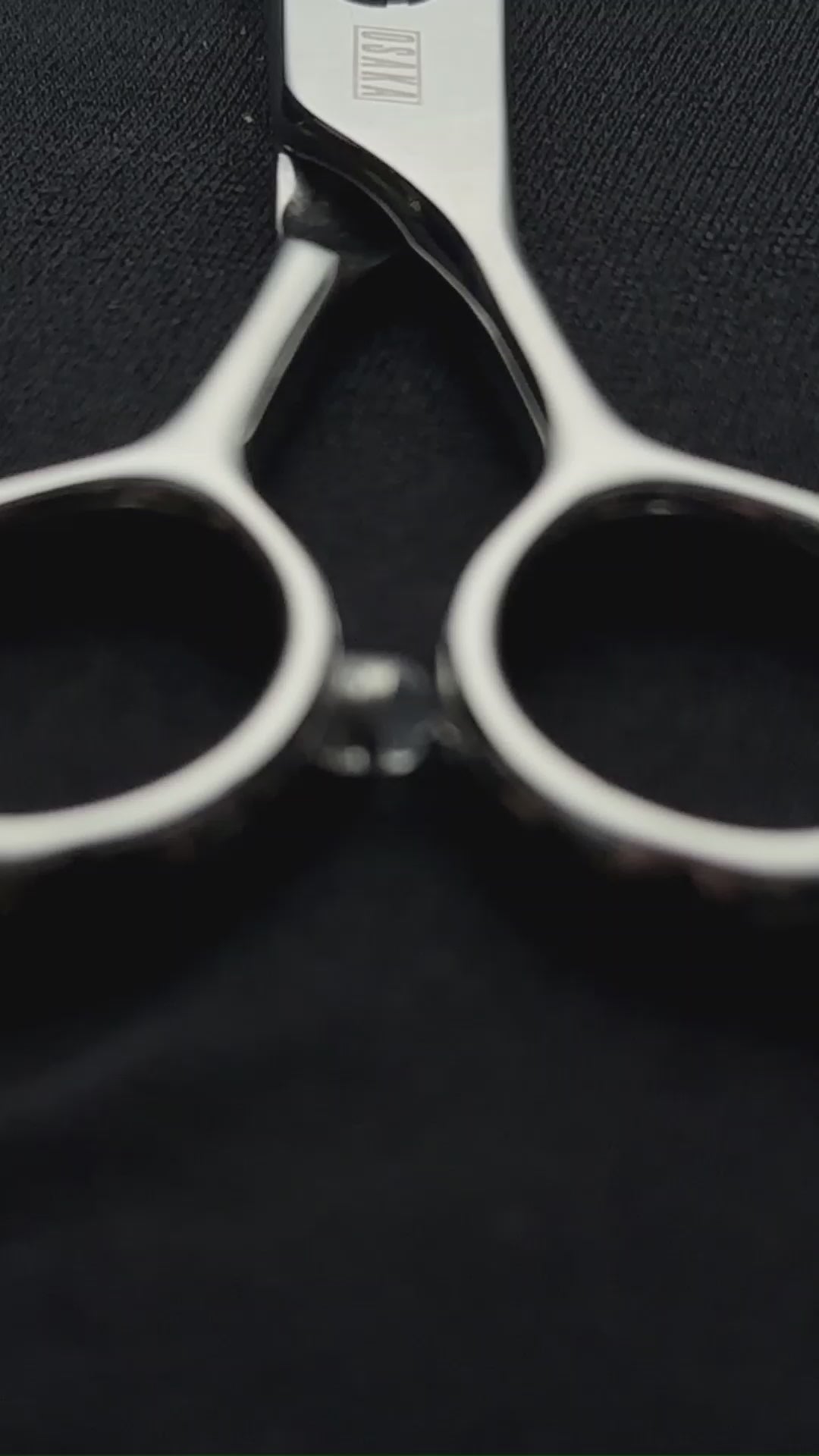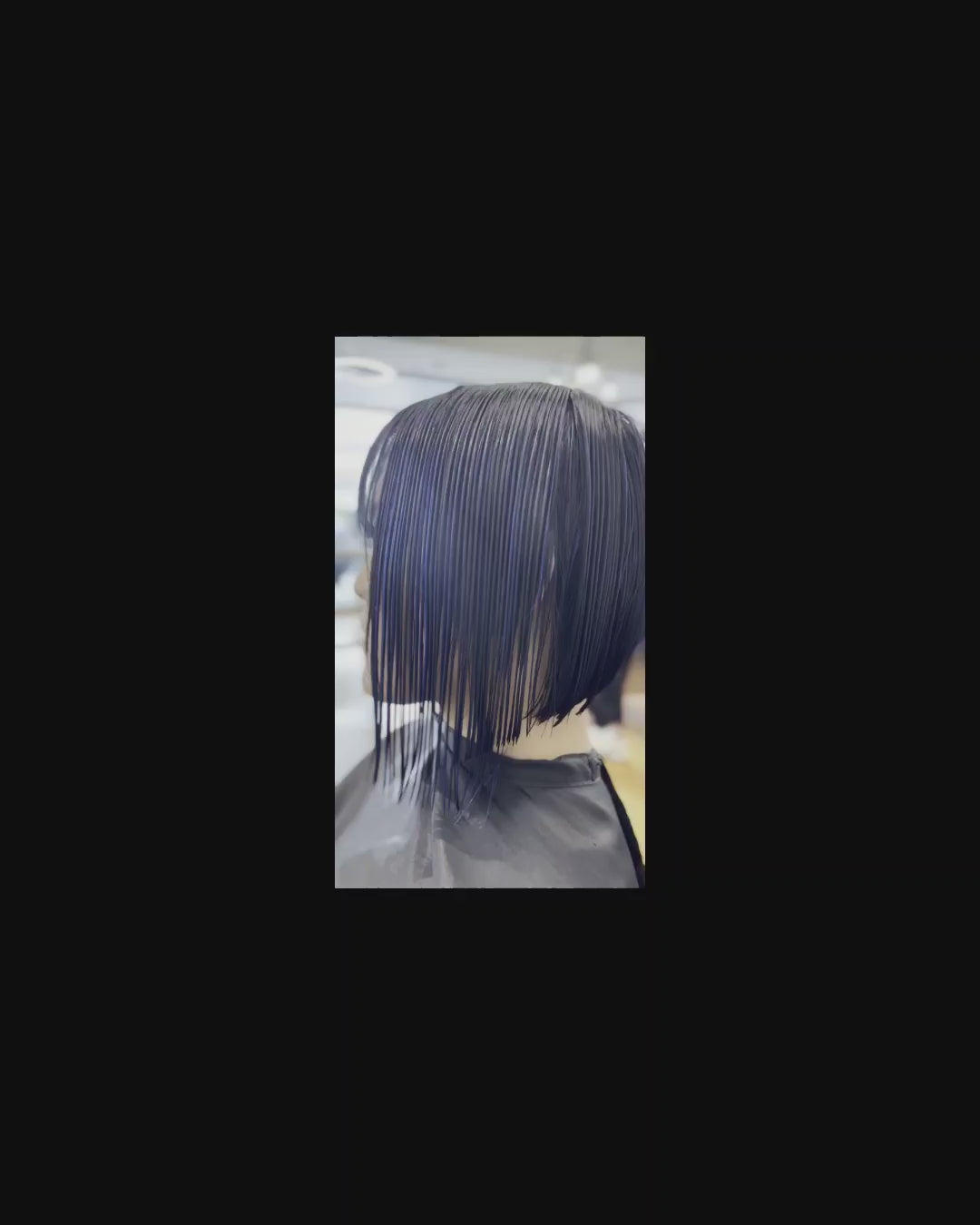Stylist Tips – How to Reduce Wrist Pain in Hairdressing

Wrist pain. This is a common issue among hairdressers. How come? Because of the repetitive motions when cutting and styling. Even blow-drying. This strain can lead to multiple conditions over time. Tendonitis. Carpal tunnel syndrome. Repetitive strain injury (RSI). These are just some of the potential issues you can get. Making it difficult to work comfortably.
The good news is that there are ways to reduce wrist pain. Improving overall hand health. You can adjust your technique. Or even choose the right tools. Here's how you can protect your wrists. All while working with hairdressing scissors in Australia:
Common Causes of Wrist Pain in Hairdressing
-
Repetitive Movements
Cutting hair involves constant opening and closing of scissors. This puts a strain on the wrist and fingers. These small but repetitive motions can lead to overuse injuries over time. These worsen with long working hours. Switch to lightweight shears like the OSAKA YCE. This can help reduce strain during prolonged use. -
Poor Scissor Grip
Holding scissors incorrectly or using non-ergonomic shears forces the wrist into awkward positions. Increasing stress on tendons and joints. A well-balanced pair of scissors can make a big difference. Both in comfort and performance. The OSAKA C4 has a crane handle design. Helping hairdressers maintain a more natural wrist position. -
Prolonged Static Positions
The wrist remains in a fixed position when hairdressers hold a tool for a long time. This can be a blow dryer or brush. Even shears. Leading to stiffness and discomfort. Alternate between different tools. Or use ergonomic designs like the OSAKA Karasu to help minimise tension. -
Excessive Force
What happens when you use scissors that aren't sharp enough? They don't glide smoothly through hair. Meaning hairdressers need to apply extra pressure. This increases strain on the wrist. So, invest in sharp tools. The OSAKA CR is a great example with its ultra-sharp convex edge. It’s one of the hairdressing scissors in Australia that allows smooth cutting with minimal effort.
Tips to Reduce Wrist Pain
1. Use Ergonomic Scissors
These are designed to fit the natural shape of the hand. Minimising strain and discomfort. The OSAKA GX40T has an offset handle. Ensuring a comfortable grip while cutting.
2. Adjust Your Cutting Technique
Change how you hold and use scissors. Even a slight adjustment can have a big impact on your wrist health.
-
Keep the wrist straight – Avoid bending it too much while cutting. This prevents tension build-up. Invest in tools that are designed to reduce hand movement while blending hair. Like the OSAKA YM383 thinning scissors.
-
Use the thumb, not the wrist – Move the scissors by opening and closing the thumb. Rather than moving the whole hand.
- Hold scissors lightly – Gripping too tightly increases tension in the wrist and fingers. Choose well-balanced shears like the OSAKA A7. Doing so can help maintain a relaxed grip.
3. Switch to Lightweight Scissors
Heavy shears put extra pressure on the wrist. Making every cut more physically demanding. This is especially tiresom during back-to-back appointments.
Lighter scissors make it easier to cut. This allows smoother movements and better control. They also let you keep a relaxed grip. Doing so frees up tension in the hand and forearm.
4. Stretch and Strengthen Your Wrists
Doing proper exercises improves flexibility. Reducing stiffness and enhancing endurance. This keeps your hands in top shape.
-
Wrist Rotations – Hold your arm out in front of you. Slowly rotate your wrist in circles. First clockwise then counterclockwise. This increases mobility and reduces stiffness from repetitive cutting motions.
-
Finger Stretches – Extend your fingers. Gently pull them back one at a time with the opposite hand. This relieves built-up tension from gripping tools the whole day.
- Grip Exercises – Squeeze a stress ball. Or use a hand gripper to build wrist and finger strength. Stronger hands improve endurance. They also reduce strain when handling scissors for long periods.
5. Take Breaks When Possible
Taking short breaks throughout the day prevents overuse injuries. It also allows your hands time to recover. Take a one-minute pause to stretch your fingers. Shake out your hands. Rest your wrists on a flat surface. These can help relieve tension.
Rotate between cutting and styling or other tasks if possible. This is to prevent repetitive stress from prolonged scissor use. Proper tool maintenance also plays a role. Keeping your scissors sharp ensures smooth cutting. Reducing the force required with each snip.
6. Use Left-Handed Shears (if Applicable)
Stylists with a left dominant hand may not find righ-handed scissors comfortable. As it forces their wrist into an unnatural angle. This is where left-handed scissors come in. They're specifically designed to match the natural movemant of a left-handed grip. This reduces strain and improves precision.
They also help maintain a better cutting posture. Preventing long-term issues with the wrist and hand. As well as the forearm. Invest in quality left-handed scissors. Doing so can make a noticeable difference in comfort and efficiency during cutting sessions.
One example is the OSAKA GXL 40T. This is a left-handed thinning shear that offers smooth movement without excess wrist strain.
7. Keep Your Scissors Sharp
Dull scissors require more effort to cut through hair. Increasing wrist strain. Regular maintenance ensures smooth cutting and less hand fatigue. This includes sharpening and oiling.
Long-Term Wrist Care for Hairdressers
-
Invest in Ergonomic Salon Equipment
Don’t just buy ergonomic scissors. Consider using an adjustable salon chair and anti-fatigue mats. This reduces overall strain. Choosing the right tools makes a significant difference in comfort. -
Maintain Good Posture
Hunching over while cutting doesn’t just affect the wrists. It also strains the shoulders and back. Keep a straight posture to distribute weight more evenly. Reducing wrist pressure. -
Seek Professional Advice for Persistent Pain
Does wrist pain continue despite adjustments? It's best to seek professional help to prevent long-term damage. Also, use ergonomic scissors to reduce recurring pain. One example of a good tool is the OSAKA YKC thinning scissors.
Get Quality Scissors from a Trusted Brand
OSAKA Scissors understands how important it is for hairdressers to have comfortable, high-quality tools. Our range of ergonomic hairdressing scissors in Australia is designed to reduce wrist strain. All without compromising performance. We offer a variety of options. From lightweight to ergonomic scissors. All to suit different cutting techniques and preferences.
Choose the right scissors and maintain proper wrist care. This way, hairdressers like you can enjoy a long and pain-free career. Shop your scissors now.





